Related Research Articles

Morane-Saulnier MoS-50 was a French parasol configuration trainer aircraft built in 1924. The twin-seat aircraft was of wooden construction and was one of the last aircraft to have a rotary engine, a 97 kW (130 hp) Clerget 9B.

The Morane-Saulnier MS.230 aircraft was the main elementary trainer for the French Armée de l'Air throughout the 1930s. Almost all French pilots flying for the Armée de l'Air at the outbreak of World War II had had their earliest flight training in this machine. It was the equivalent of the Stearman trainer in the United States air services and the de Havilland Tiger Moth in the British Royal Air Force.

The Morane-Saulnier MS.138 was a military trainer aircraft produced in France in the late 1920s,

The Morane-Saulnier MS.147 and its derivatives, the MS.148 and MS.149 were a family of trainer aircraft produced in France in the late 1920s for civil and military use. They were derived from other machines in Morane-Saulnier's successful line of monoplane trainers, combining the wire-braced parasol wing of the MS.138 with the fuselage and undercarriage of the MS.130.

The Morane-Saulnier MS.180 is a single engine, single parasol wing aerobatic trainer designed in France in 1929. About seventeen were produced and used in French flying clubs, some surviving World War II and one remaining in use at a club until the 1970s. Before World War II, some were used by Spanish Republican forces to train pilots in the Spanish Civil War. Two MS.181s are still flying.

The Morane-Saulnier MS.341 was a single engine parasol wing training and touring aircraft built in France in the mid-1930s. It had two open cockpits in tandem and was sold to private owners, clubs and the Armée de l'Air.

The Potez 40 was a French three-engine, braced high-wing monoplane designed and built in response to a French government programme for colonial transport and policing aircraft duties.
The Caudron C.220 was a two-seat French biplane trainer. Only two were built, using different engines.

The Caudron C.27 was a French biplane, a two-seat basic trainer which also competed successfully in the 1920s.
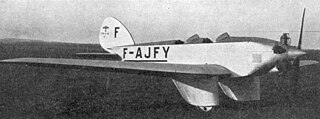
The Albert A-60 was a single engine, two seat, wooden sports monoplane designed and built in France in the early 1930s. Two were built and flown with three different engines.
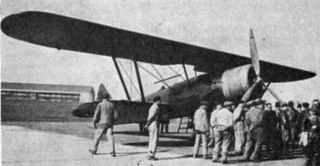
The Potez 50 or Potez 50 A2 was a French two seat military multi-rôle aircraft, first flown in 1931. It did not go into service but seven variants using five different engines were produced, one of them setting several speed with useful load records and another, the Potez 506, setting three altitude world records.

The Morane-Saulnier MS.350 was a French aerobatic trainer flown in 1936. Only one was built but it had a long career, flying post-war until the 1960s.

The Dewoitine D.480 was a French single engine side-by-side sports and training aircraft built in the early 1930s. Two were completed and flew with several different radial engines. One remained active through the 1950s.
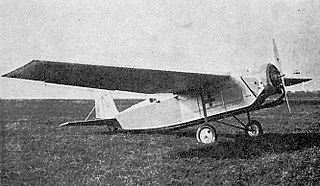
The Guillemin JG.40 was designed and built to meet a French government requirement for a small air ambulance capable of operating in the colonies. Two were completed and performed well but the JG.40 did not reach production.
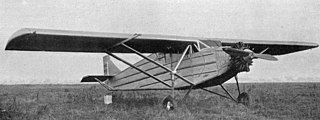
The Aviaméta 92 was a French, all-metal, five seat monoplane built in the late 1920s. Three different engines were fitted, and one example flew the first non-stop Paris-Algiers flight in preparation for an abandoned trans-Atlantic attempt.

The Peyret-Nessler Libellule (Dragonfly) was a French two-seat, low-powered parasol wing light aircraft built in 1927 to provide practical but economical flying. It was one of the first of these French avionettes.
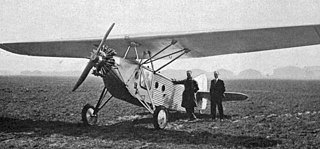
The Hanriot H.46 Styx was a French, single-engined, parasol wing aircraft which could equally be configured for training, liaison or ambulance roles; in the latter form it was able to accept a patient on a stretcher. Several different engines were fitted and flown but the type did not reach production.
The Morane-Saulnier MS.152 was a French multi-purpose aircraft built in 1928. It did not go into production.

The Morane-Saulnier MS.221 was a French fighter aircraft, built in 1928 to compete for a government contract in the "Jockey" programme. Two were built, one of which was progressively modified to increase its speed, but in 1930 the light fighter concept was abandoned.
The Morane-Saulnier MS.250 was a crew-trainer aircraft built by Morane-Saulnier in the late 1920s.
References
- 1 2 3 4 5 Frachet, André (30 November 1930). "L'avion Morain-Saulnier "301"". Les Ailes (493bis): 11.
- 1 2 3 4 "L'avion d'école de début Morane-Saulnier 301". L'Aéronautique. December 1930.
- ↑ "L'Aéro-club d'Auvergne ..." Les Ailes (469): 8. 12 June 1930.
- ↑ "Les Fêtes de Clairmont-Ferrand". Les Ailes (473): 1. 10 July 1930.
- 1 2 "Morane Saulnier". L'Aérophile Salon 1930: 113. December 1930.
- ↑ Simpson, Rod (2001). Airlife's World Aircraft. Shrewsbury: Airlife Publishing Ltd. p. 385. ISBN 1-84037-115-3.